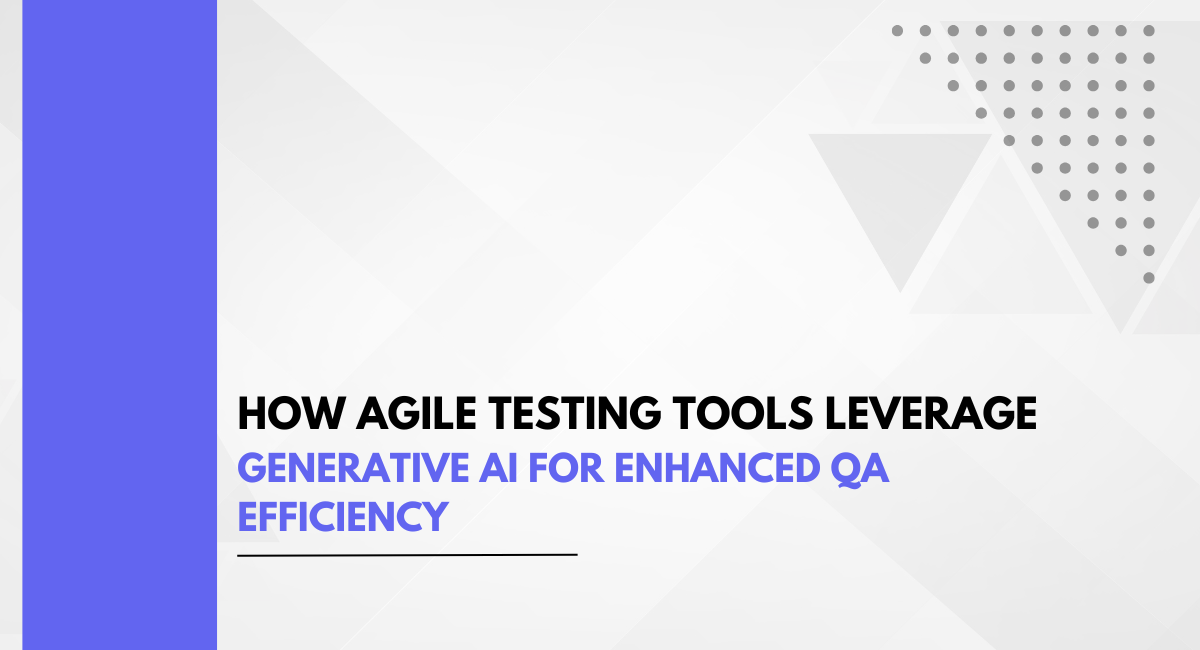For years, software development Quality Assurance (QA) teams have been searching for ways to streamline their processes, reduce errors, and deliver high-quality products at an unprecedented pace. Enter generative AI, the latest game-changer transforming the way we approach testing. By harnessing the power of generative AI, agile testing tools are not only enhancing QA efficiency but also reshaping the very fabric of how we guarantee software reliability.
The Rise of Agile Testing and Generative AI
Agile development methods, such as Scrum and Kanban, have revolutionized software development by emphasizing continuous improvement, iterative development, and customer collaboration. The rapid delivery and continuous improvement required by these methodologies mean that QA must also evolve to keep pace.
Agile testing involves frequent, incremental testing early and often throughout the development process. This approach allows for early detection and correction of defects, reducing overall testing time and improving software quality.
The Integration of Generative AI
Generative AI has recently been integrated into agile testing tools, offering a more efficient and effective way to test software. These AI-driven tools can generate test data, simulate user interactions, and even predict potential bugs before they occur. For instance, tools like TestRigor use generative AI to automate repetitive testing tasks, reducing the need for manual scripting and allowing testers to focus on more complex and critical aspects of testing.
One of the key advantages of generative AI in agile testing tools is its ability to learn from data. By analyzing past test results and system behavior, AI algorithms can identify patterns and generate more effective test scenarios. This capability not only saves time but also increases the accuracy of tests, reducing the likelihood of false positives and false negatives.
Key Features of AI-Driven Agile Testing Tools
- Automated Test Data Generation: Generative AI can create realistic user data, which is essential for comprehensive testing. This feature ensures that tests are run with diverse inputs, increasing the likelihood of detecting rare bugs.
- Predictive Analytics: These tools use machine learning algorithms to predict potential issues before they occur. By analyzing system behavior and historical data, they can pinpoint areas that are more likely to fail during deployment.
- Continuous Integration/Continuous Deployment (CI/CD): Integration with CI/CD pipelines allows for seamless testing and deployment cycles. This integration ensures that new code changes are thoroughly tested before they are released to production.
- Collaborative Environment: Many AI-driven testing tools offer collaborative features where multiple developers and testers can work together in real-time. This collaborative environment enhances communication and accelerates the testing process.
Picture These Success Stories
Several companies have already seen significant improvements in their QA processes by adopting AI-driven agile testing tools.
- A leading e-commerce platform implemented TestRigor's generative AI solution to automate 80% of its repetitive testing tasks. This not only reduced the testing time but also allowed the QA team to focus on more critical aspects of testing, leading to a 30% increase in overall software quality.
- A fintech firm using Calsoft's generative AI-based testing tool experienced a 25% reduction in bug density. The tool's ability to simulate complex financial transactions helped uncover hidden issues that traditional testing methods might have missed.
Challenges and Future Directions
While generative AI has significantly enhanced QA efficiency, there are still challenges to be addressed. One major concern is the potential for over-reliance on AI-driven tools. The human element is crucial in testing, as AI tools can sometimes miss critical edge cases. Therefore, it is essential to maintain a balanced approach, combining the strengths of both human testers and AI-driven tools.
Another area of focus should be on ensuring data privacy and security when using generative AI. Test data often includes sensitive information, and it is crucial that these tools are designed with robust security measures to protect this data.
The integration of generative AI into agile testing tools has revolutionized the QA landscape by providing faster, more accurate, and more comprehensive testing solutions. As technology continues to advance, it is likely that these tools will become even more sophisticated, enabling developers to deliver higher-quality software faster than ever before.
The synergy between human insight and AI-driven automation promises a QA paradigm that is not only more efficient but also more innovative, ensuring a safer, more reliable, and more user-friendly digital world—one test case at a time.
You may also be interested in: Cloud-Based Test Automation in Best 5 Strategies
Book a Demo and experience ContextQA testing tool in action with a complimentary, no-obligation session tailored to your business needs.
We make it easy to get started with ContextQA tool: Start Free Trial.
